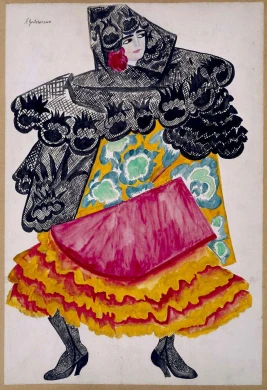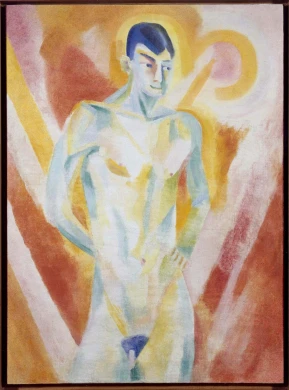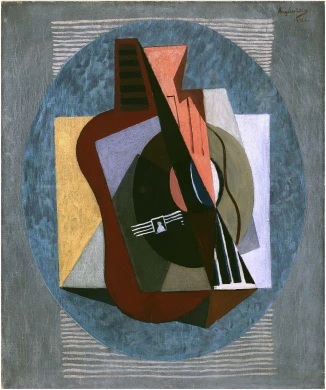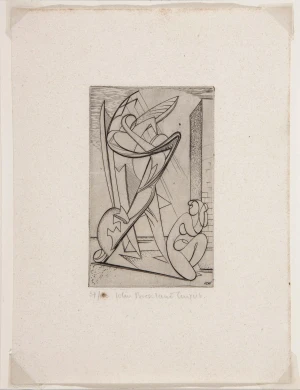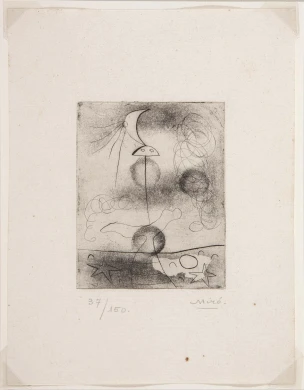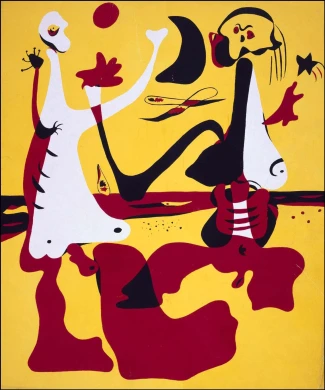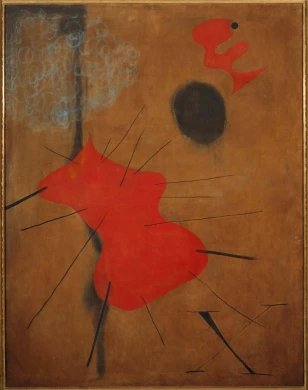
Danseuse espagnole I (Spanish Dancer I)
- Technique
- Grease pencil, collage (sandpaper and printed paper) and steel nails on card stock prepared on board
- Dimensions
- 105 x 73,5 cm
- Year of entry
- 1989
- Registration number
- AS11019
- Date
1928 (Paris)
In the late 1920s, Joan Miró embarked upon an anti-pictorial search in opposition to the “painting-painting” extolment and the bourgeois art market, experimenting with new methods of expression, such as collage and constructions with unusual materials. In the spring of 1928, he worked on a series of four collages on the theme of the Spanish dancer, stressing the tactile nature of the work by including non-pictorial materials. The compositional schematism and the symbolic choice of elements lend the work a visual, poetic quality. In Danseuse espagnole I (Spanish Dancer I), a strip of sandpaper includes an inverted, pencil-drawn “v”, under which there is a paper cutout with the image of a shoe belonging to a flamenco dancer. The vertical line on the left, meanwhile, is the stylisation of her body, while the head is represented by a small circular plinth crossed by a feather, of which only a mark remains. The work, from the collection of André Breton, was considered by the poet Paul Éluard as “the most naked painting imaginable”.
Raúl Martínez Arranz


